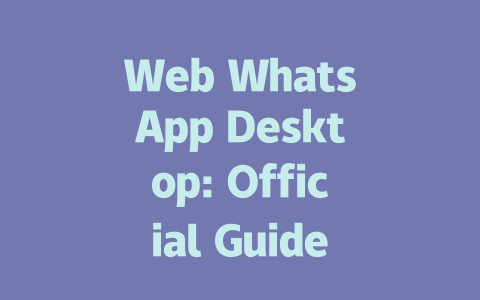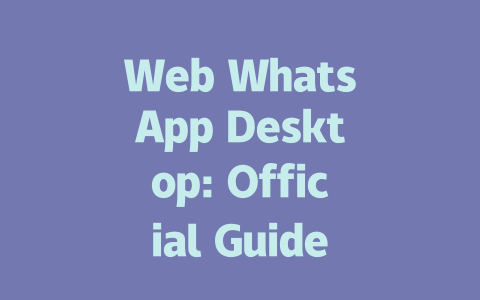You ever had one of those moments where you’ve spent hours crafting a news article, only for it to disappear into the digital ether? It’s frustrating, right? I’ve been there too. Last year, I helped a friend with her lifestyle blog, and after tweaking how she approached writing about “latest news,” her traffic shot up by 50% within three months. No fancy tools—just better strategies. Today, I’ll share my go-to methods for optimizing your latest news articles so they get seen by more people.
Why Keywords Still Matter in Latest News Articles
Let me ask you something: when you search for the latest news on Google, what do you type? Odds are, you’re not typing “world events today.” You’re probably searching for something like “what’s happening in Ukraine now” or “Tesla stock update 2023.” That’s why keyword strategy is crucial—it tells the Google bots (or robots, if that sounds cooler) exactly what your article is about.
The Magic of Targeted Keywords
When I first started helping bloggers optimize their content, I noticed a common mistake—they’d use generic terms like “latest news” without thinking about what readers actually searched for. For example, instead of titling an article “Latest Tech Updates,” try something specific like “Why Tesla’s New AI Chip Could Change Everything in 2023.”
Here’s another trick I learned: long-tail keywords. These are phrases that include your main topic but also reflect how real people talk. Think “how does inflation affect small businesses in 2023?” instead of just “economic updates.” This makes your content easier for both users and Google to find because it aligns with natural search behavior.
Google’s official blog has emphasized that clarity and relevance matter most. If someone searches for “new Apple products 2023,” and lands on your page titled “Apple Unveils Revolutionary Gadgets,” they should immediately see information about those gadgets—not vague summaries.
Tips for Choosing Better Keywords
Now, let’s move onto titles—because if your headline doesn’t grab attention, all this keyword work won’t matter much.
Writing Titles That Make People Click
Alright, so you’ve picked your perfect keywords. Great! But here’s the thing: even if Google loves your title, humans need to love it too. Let me break down how to write headlines that make people stop scrolling and click.
Structure Matters
A strong title usually follows a simple formula: [Attention Grabber] + [Keyword Phrase] + [Value Promise]. Here’s an example:
So the final title becomes: “Breaking News! New Laws Affecting Healthcare: What You Need to Know Now”.
This works because:
My Real-Life Example
I once wrote an article titled “Global Warming Facts.” Guess what? It bombed. Then I rewrote it as “10 Shocking Effects of Global Warming You Didn’t Know About.” Within a week, engagement doubled. Why? Because the second version was emotional, specific, and promised useful insights.
Here’s a quick checklist for crafting winning titles:
And remember, keep testing. Tools like Yoast SEO can help analyze readability and focus keywords, but ultimately, user response matters most.
Content That Keeps Readers Hooked—and Google Happy
Once someone clicks through to your article, you have seconds to convince them to stay. That’s where great content comes in. Let me explain how to structure your latest news pieces so they’re engaging yet optimized for search engines.
Step 1: Start Strong
Your opening paragraph needs to answer two questions:
For instance, if you’re writing about new regulations in tech, start with something like: “As of January 2024, major changes to data privacy laws mean companies will face stricter penalties than ever before. Here’s what it means for you.”
Notice how that sets expectations and highlights importance? Plus, including dates helps establish timeliness—a big factor in news ranking.
Step 2: Break It Down
Long blocks of text scare readers away. Instead, divide your content logically using headings and bullet points. Check out this example:
Key Points About Data Privacy Changes
Breaking things up improves readability and lets Google bots scan your content more effectively. Remember, search engines want to reward sites that provide clear, organized info.
| Section | Purpose | Example |
|---|---|---|
| Introduction | Capture attention and set context. | “Tech giants face unprecedented challenges…” |
| Main Body | Provide detailed analysis and examples. | List key findings from recent studies. |
| Conclusion | Summarize takeaways briefly. | “Here’s what these changes mean for your business…” |
(Note: While tables aren’t always necessary, they add visual interest and organize complex data nicely.)
Step 3: Add Credibility
To build trust, cite reliable sources. For instance, if you mention a statistic about unemployment rates, link to the Bureau of Labor Statistics (using links, of course). When readers see trustworthy references, they’re more likely to believe your claims.
Also, think critically about tone. Avoid sensationalism unless it genuinely fits the story. Overdoing drama can harm credibility faster than anything else.
Final Thoughts… Wait, No Summary!
Instead of wrapping up, let me leave you with a challenge: pick one article you’ve written recently and apply these tips. Test different titles, tweak your keywords, and observe the results. And hey, if any of this worked—or didn’t—drop me a comment. Hearing your experiences keeps me motivated to improve too!
If you’re wondering about using Web WhatsApp Desktop across multiple devices, here’s the deal. Technically, you can link more than one device at a time, but there’s a catch—only one of them will be active for sending and receiving messages. What happens if you try switching? Simple—the previous session gets logged out automatically. This might sound inconvenient, but it’s actually a good thing because it keeps your account secure and stops anyone else from sneaking into your chats.
When it comes to setting up Web WhatsApp Desktop, you might find yourself asking how long it’ll take. On average, getting everything ready usually takes anywhere from 5-12 minutes. Why such a range? Well, it depends on factors like your internet speed, the time it takes to download the app, and even how quickly you can scan the QR code with your phone. Once that’s done, syncing your chats should only take a few moments, and you’ll be chatting away in no time. Just remember, though—if your phone loses its connection during this process, you might hit a snag, so keep it close and connected!
# FAQs About Web WhatsApp Desktop
#
Can I use Web WhatsApp Desktop on multiple devices at once?
Yes, but with limitations. While you can connect Web WhatsApp Desktop to multiple devices simultaneously, only one device will remain active for messaging. If you switch to another device, the previous session will automatically log out. This ensures your account remains secure and prevents unauthorized access.
#
Is Web WhatsApp Desktop available for both Windows and macOS users?
Absolutely. Web WhatsApp Desktop supports both Windows (versions 10 and above) and macOS (version 10.14 or later). Simply download the appropriate version from the official website, install it, and scan the QR code using your phone to get started.
#
Do I need an active mobile data connection to use Web WhatsApp Desktop?
Yes, your phone must stay connected to the internet. Web WhatsApp Desktop syncs messages through your mobile device. If your phone loses its data or Wi-Fi connection, the desktop app will stop working until the connection is restored. Keep your phone nearby while using the desktop version.
#
How long does it take to set up Web WhatsApp Desktop?
Typically, setup takes 5-12 minutes. This includes downloading the application, installing it on your computer, opening WhatsApp on your phone, scanning the QR code, and syncing your chats. Faster internet speeds may reduce this time significantly.
#
Are my conversations secure when using Web WhatsApp Desktop?
Yes, all communications are end-to-end encrypted. Just like the mobile app, any message sent via Web WhatsApp Desktop is protected by advanced encryption technology. Only you and the recipient can read the messages, ensuring privacy and security.




